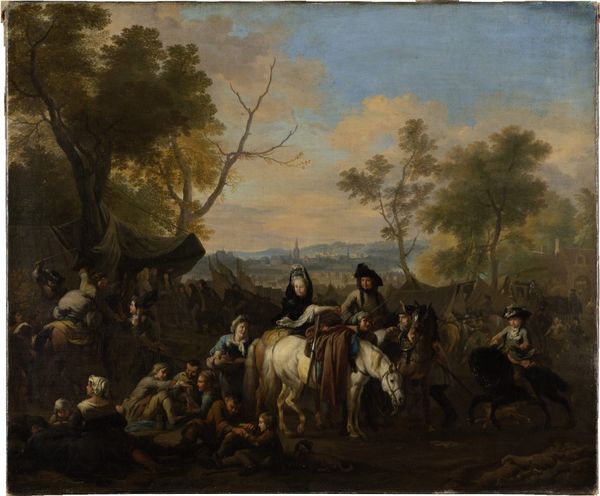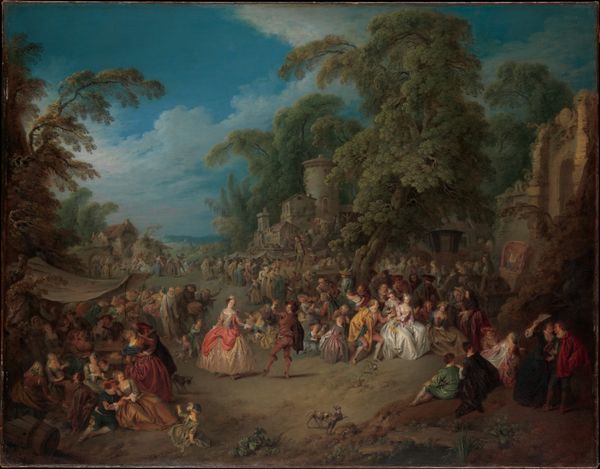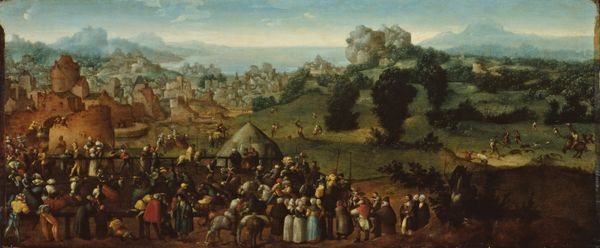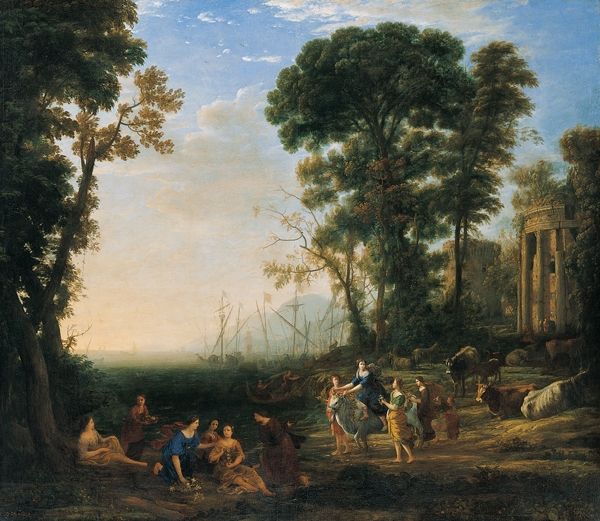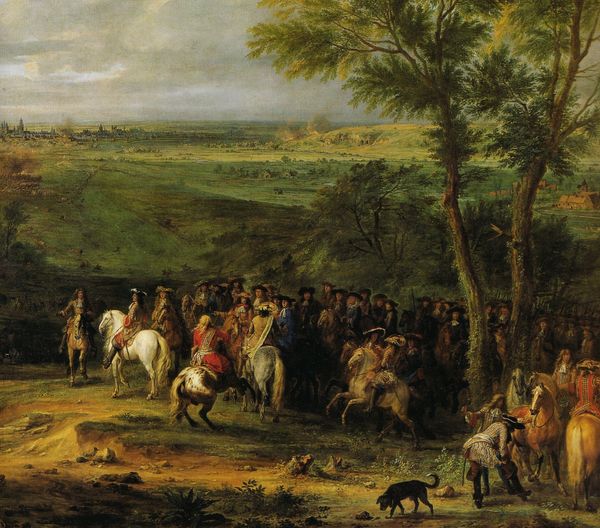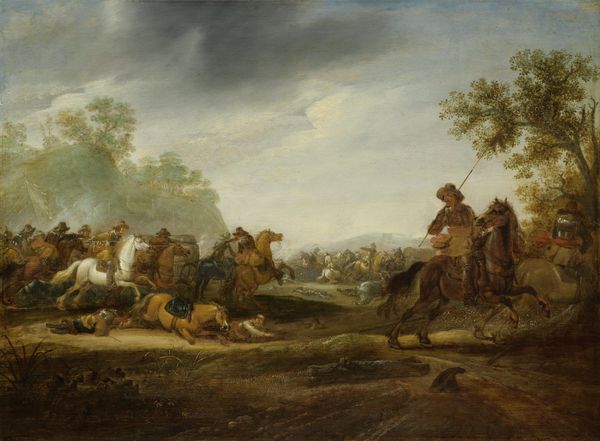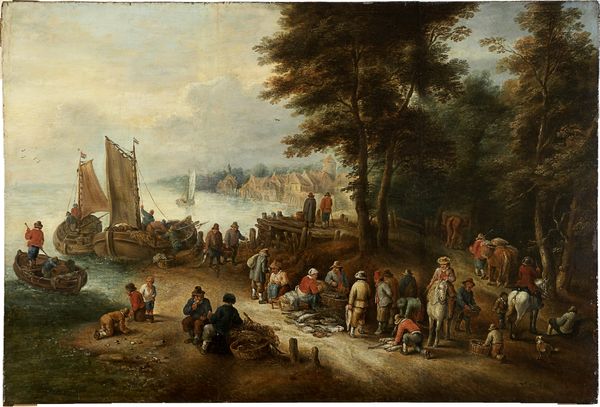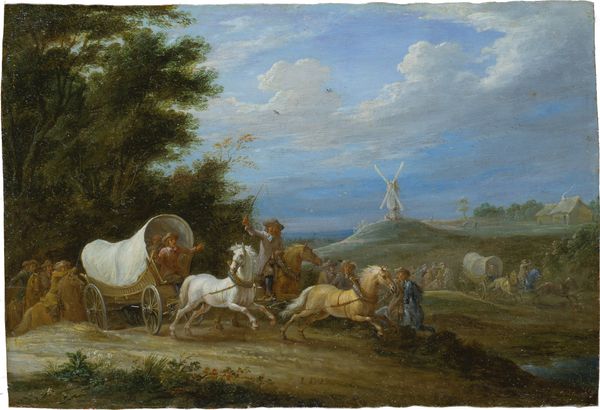
painting, oil-paint
#
baroque
#
painting
#
oil-paint
#
landscape
#
soldier
#
horse
#
men
#
genre-painting
Dimensions: 28 5/8 x 41 1/8 in. (72.7 x 104.5 cm)
Copyright: Public Domain
Editor: We’re looking at “Soldiers Bivouacking,” an oil painting by Pieter Snayers, dating from sometime between 1612 and 1667. It depicts a cluster of resting soldiers. I'm struck by how…mundane it seems, considering the subject. What's your take? Curator: Mundane, perhaps, but consider the Thirty Years' War, a brutal, extended conflict shaping Snayers' world. His patrons—aristocrats and military leaders—needed imagery that both celebrated victories and normalized the constant presence of soldiers. How do you think that affected the painting's composition? Editor: So it's not just a scene, but a carefully constructed…narrative? Like propaganda? Curator: Precisely! Snayers was employed by the Spanish governors to record military actions in the Spanish Netherlands. Think about the idyllic landscape - almost downplaying the harsh realities of war, perhaps making it more palatable to viewers. It wasn’t necessarily about an objective truth, but about presenting a particular perspective, influencing public perception. Editor: It's interesting to see how something seemingly calm and bucolic could have a political purpose, framing conflict in a way that serves those in power. I never would have thought of that! Curator: The painting, beyond its aesthetic qualities, served as a visual tool. Its reception and function within the Spanish Netherlands contributes a layer of understanding beyond its surface appeal. What do you think you'll remember most about this painting? Editor: That it’s so much more than what's initially visible—a tool, a carefully constructed message meant to be consumed and, maybe, believed. Thank you.
Comments
No comments
Be the first to comment and join the conversation on the ultimate creative platform.

